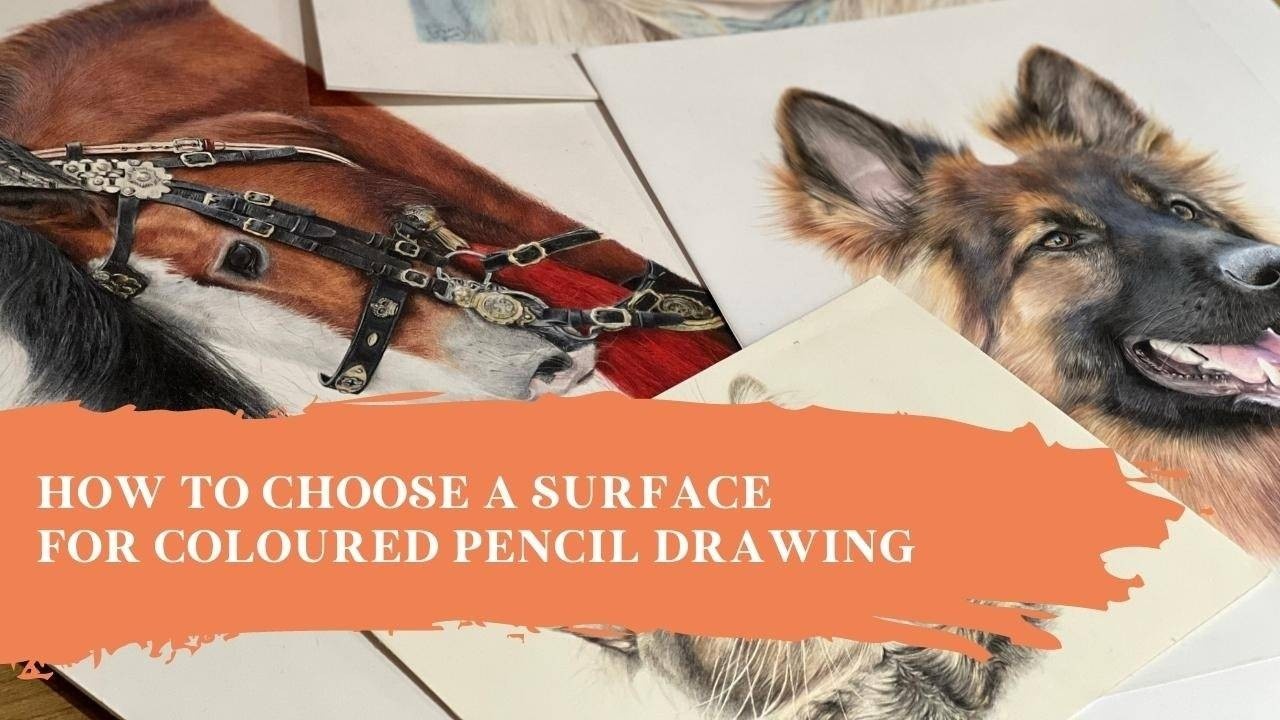How to Choose a Surface for Your Coloured Pencil Drawing | Materials Guide
Jul 08, 2022
A question I get asked all the time is how do I decide which paper to use when I come to draw a new subject in coloured pencil. There are so many choices that figuring out which one is the right one can be difficult and, in all honesty, there is no right answer! A lot of my decision is based on preference, but there are a few things I take into consideration before starting a piece, and I wanted to share these with you today in hopes that it will help to make your own decision much easier when you come to start your next drawing.
What You’ve Used Recently
If I’ve been drawing on one particular surface for a previous drawing, I’m more likely to decide to use that again in my next piece. Continuing on with the same surface gives me an advantage, as I’ve still got the muscle memory for the paper, as well as a fresh understanding of how drawing on it feels and the techniques I’ll need to use. If I was to move from one surface to another between every drawing, I’d be making my life more difficult than it needs to be, so the trick is to stick with what you’re used to.
Certain Subjects Lead to Certain Surfaces
Having said all that, sometimes you’ll be met with a subject that was just meant to be on a different surface. Certain subjects seem to be made for Pastelmat, while others seem to be destined for Drafting Film. This is where your artist’s eye and intuition come into play, and they take time to develop.
To give you a hint, if I’m planning on drawing a subject with lots of texture and fine details, where I know I’m going to need to use my Tombow eraser and Slice Tool a lot, I’m more likely to use Drafting Film. I’m also more likely to turn to Pastelmat if the reference photo has a soft-focus effect, which you usually find around the edges of a subject where the fur starts to blend out into the background.
The Quality of Your Reference Photo
If I’m going to be working with a reference photo that isn’t particularly high quality, I sway towards Pastelmat, as it allows you to add the softness you usually need for these photos, while blending my coloured pencils to get a more painterly look. When you’re working with a photo that isn’t the best quality, it’s usually difficult to add lots of fine details, so being able to blend and smooth the colours is the easiest way to add realism.
Use What You Enjoy!
More often than not, as you’ve probably guessed, I use either Pastelmat or Drafting Film, because I enjoy working on them both. Pastelmat is, without a doubt, my favourite surface, which is one of the main reasons why I choose to use it for almost all of my commissioned pieces. The best thing you can do when you’re trying to decide which surface to use is to go with something that you love drawing on. If you love the surface and you’ve got a good understanding of the techniques that work for you while using it, that’s going to help you out immeasurably.
If you’re still very new to drawing with coloured pencils and you haven’t decided which surface is your favourite yet, give a few of them a try. Drawing and practising on a variety of surfaces will help you figure out which ones you’re comfortable with and which ones work best for you.
Give the video at the top of this page a watch to find out more, to see examples of the pieces I’ve drawn on different surfaces and to understand why I chose the paper I did for each.
Ignite by Bonny Snowdon
...is the ultimate membership for those wanting to improve their Coloured Pencil Skills, increase their confidence and realise their dreams!
....................
Sign up below to join the Ignite Waitlist
Join our mailing list to receive the latest news and updates from our team.
Don't worry, your information will not be shared.

